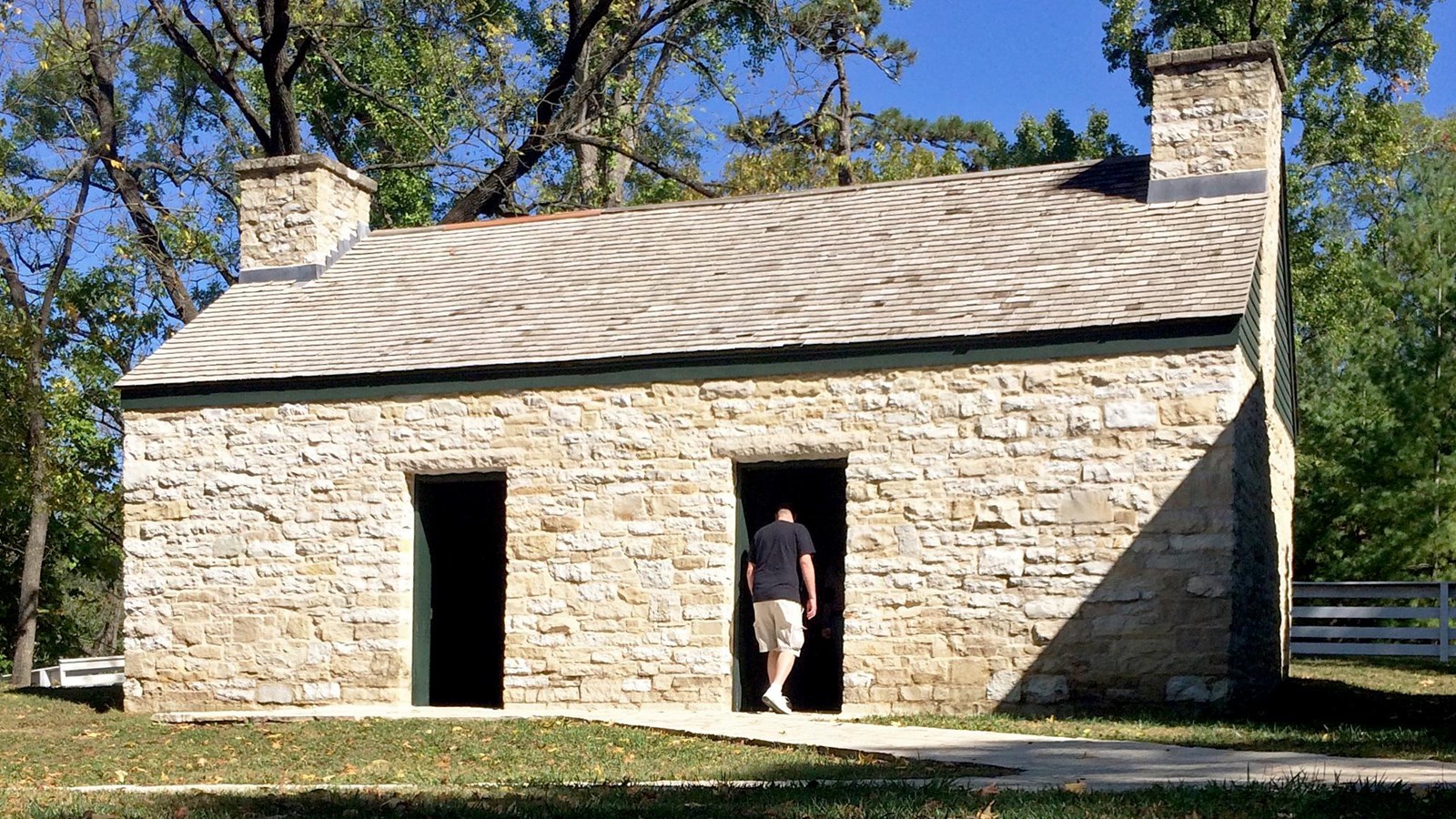Last updated: December 19, 2020
Place
Summer Kitchen

NPS Photo/D. Newmann
Accessible Sites, Cellular Signal, Fire Extinguisher, Historical/Interpretive Information/Exhibits, Wheelchair Accessible
"Black Mary was an artist. Such loves of beautiful snowy cake, such plates full of delicious Maryland biscuits, such exquistite custards and puddings, such omelettes, gumbo soup, and fritters. These were [Mary's] specialty." - Julia Dent Grant
The stone building behind White Haven has served a number of functions over the years, but was used primarily as a summer kitchen and laundry room during the nineteenth century. The structure is what architects call a “double-pen,” a British design that features two side-by-side rooms with gable end chimneys. Early Drawings of White Haven suggest that this structure existed as early as 1840. Enslaved laborers worked in this structure cooking food and cleaning laundry when the Dent family owned the property before the Civil War. There is also evidence suggesting that some of the enslaved cooks may have lived in the attic of this structure.
The stone building fell into disrepair in the early twentieth century. In the 1950s the structure was turned into a three-car garage by the owner of White Haven at that time, Delbert Wenzlick. After the National Park Service acquired ownership of White Haven in 1990, work was done to demolish the garage and renovate the building to its nineteenth century appearance. A large number of broken dishes, crockery, silverware, and other historical artifacts from the nineteenth century were discovered during several archaeological digs around this area, further demonstrating the ways enslaved laborers used this space to perform their duties at White Haven.
